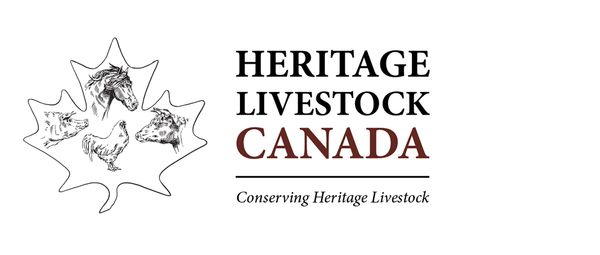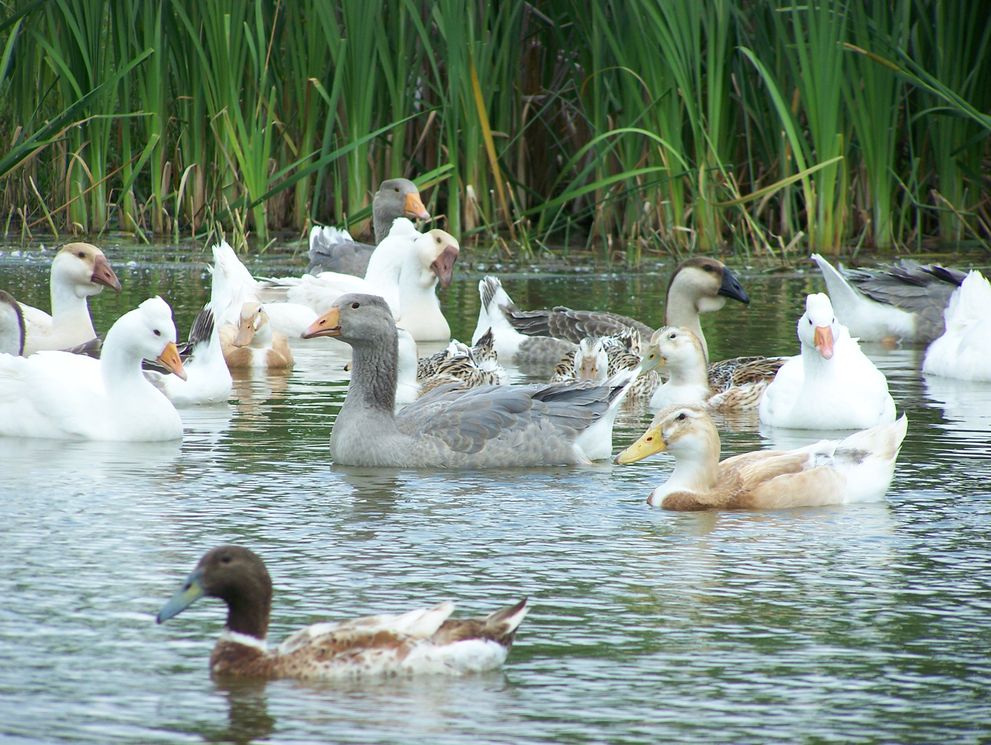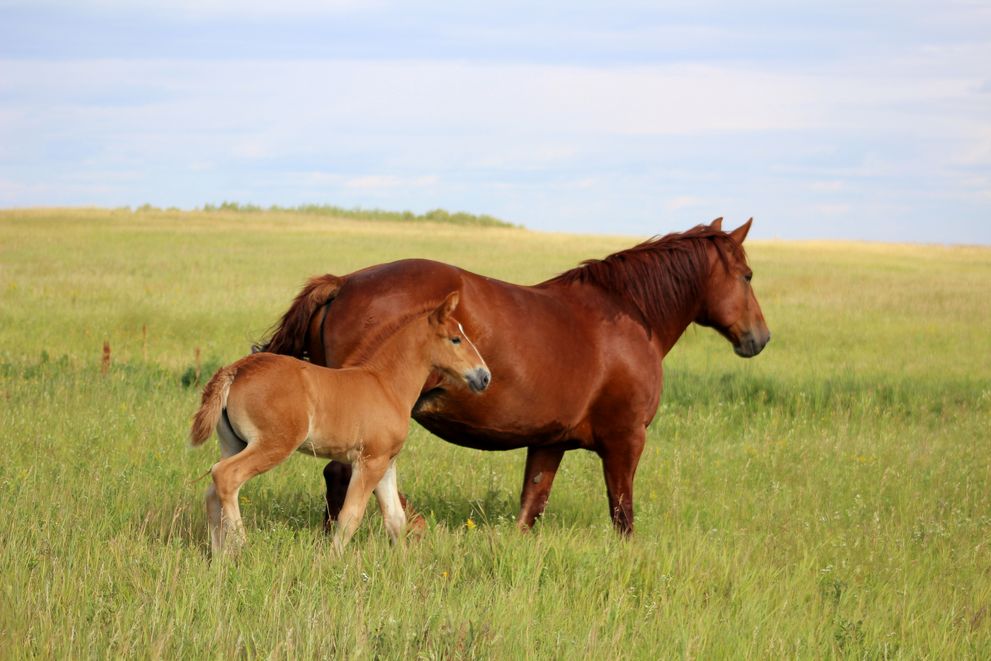Saving the Lacombe Pig
THE LACOMBE PIG WAS SAVED FROM EXTINCTION IN 2018 BY HLC AND ITS MEMBERS
Developed in 1947 in Lacombe Alberta, with crosses of Berkshire sows to boars of Danish Landrace and Chester White ancestry.
The Lacombe was unveiled to pork producers in 1957. They quickly grew to be a popular breed. 1,743 were registered in 1981, of which 648 were boars and 1,095 were females.
At this time we are trying to re-establish some small herds across the Country. With less than 7 adult breeding females they are in danger of becoming extinct!
The Lacombe is a white, medium-sized pig with a docile temperament. It has large, drooping ears, is long bodied and rather short of leg, and is quite meaty in conformation.
The breed has been specially selected and noted for its rapidity of gain and docility, especially the sows. Much attention has been paid to litter size, weaning weight, growth rate, the efficiency of feed conversion, carcass quality, and physical soundness.
IT STILL NEEDS YOUR HELP TO RE-ESTABLISH HERDS ACROSS CANADA
You don't have to be a farmer to save a rare breed!
YOU CAN HELP BY MAKING A DONATION OR BECOMING A MEMBER YOUR DONATIONS
GO INTO THE EMERGENCY RE-ESTABLISHMENT FUND FOR HERITAGE LIVESTOCK ACROSS CANADA

Congratulations to Kodie Gills, Horizon Hog Farm, ON. His Lacombe sow, featured only a few days ago farrowed and has 12 healthy piglets with her. To check out some more photo's of Kodie's efforts to preserve and increase numbers of registered Lacombe - we recommend you take a look at: facebook.com/HorizonHogFarm.
Canada Agriculture and Food Museum
Photo credit: Ingenium - Canada's Museums of Science and Innovation
OTTAWA, ON, August 27, 2018 – The Canada Agriculture and Food Museum – one of three museums under Ingenium - Canada's Museums of Science and Innovation - has recently welcomed a new addition into its display of animals – a rare Lacombe pig. Acquired with the help of Heritage Livestock Canada (formerly Rare Breeds Canada), who work to conserve endangered breeds of farm livestock and poultry, the pregnant gilt (female) recently farrowed a litter on August 16, 2018. Their dam (mother) is one of only seven remaining registered Lacombe gilts across Canada.
The Museum has displayed Lacombe pigs in the past, and is thrilled to welcome the sow and her piglets as another example of innovative research and breeding in Canada. Lacombe pigs - a hybrid of Landrace, Berkshire and Chester White - were the first swine breed developed in Canada, at the Agriculture Canada Research Station in Lacombe, Alberta and first licensed for sale in 1957. With fewer than 100 pigs left in Canada, the heritage breed has been deemed to be critically endangered, with Heritage Livestock Canada having raised concerns about low numbers in the national pig population.
Known to be an especially docile breed of pig with an average size with a white coloured body with lop ears, the breed has been selected and noted for its rapidity of weight gain - especially apparent with the sows.
Contact
Christine Clouthier
Ingenium – Canada's Museums of Science and Innovation
613-990-6508
Quotes
“With the addition of these Lacombe pigs, the Canada Agriculture and Food Museum hopes to continue its work in preserving the genetic heritage of this rare breed before it becomes extinct. We are thrilled to have the opportunity to display another example of the first livestock breed developed in Canada – a true symbol of Canadian innovation.”
-Kerry-Leigh Burchill, Director General, Canada Agriculture and Food Museum
“Heritage Livestock Canada is very hopeful that the birth of these Lacombe piglets will spark a renewal of interest in Canada's agricultural history. Together, we feel fortunate for the chance to save such an important breed; this first litter and future purebred, registered litters will help increase the awareness and necessity of such vital genetic diversity. We look forward to the continued production and display of these beautiful farm animals that will tell their own story of agricultural history in Canada.”
-Elwood Quinn, Livestock Chair, Heritage Livestock Canada
About the Canada Agriculture and Food Museum
The Canada Agriculture and Food Museum - one of the three museums under Ingenium - Canada's Museums of Science and Innovation, is located at Ottawa’s Central Experimental Farm, which traces its roots to 1886 and is the world’s only working farm in the heart of a capital city. The museum offers programs and exhibitions on Canada’s agricultural heritage, food literacy, and on the benefits and relationship of agricultural science and technology to Canadians’ everyday lives. It provides visitors with a unique opportunity to see diverse breeds of farm animals important to Canadian agriculture past and present, and to learn about the food they eat. In addition to breeds common to Canadian agriculture, such as Holstein dairy cows and Angus beef cows, the museum also has Canadienne dairy cows, Tamworth pigs, and Clydesdale horses. Many other breeds of dairy and beef cattle, pigs, sheep, horses, poultry, goats, and rabbits round out the collection.
A trip to collect Lacombe piglets & oversee the breeding of two Lacombe gilts at the Canada Agriculture Museum, Ottawa
A trip to collect Lacombe piglets & oversee the breeding of two Lacombe gilts at the Can.Ag.Museum, Ottawa turned into a two day venture. A Duroc gilt was cycling but not able to be covered naturally, so after a call to CIPQ an order of fresh semen was delivered at midnight in Montreal. Kept at 17c.overnight, we were back in Ottawa to breed the gilt a few hours later. Good Luck Hugo! lets hope for a litter around mid July




